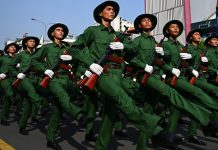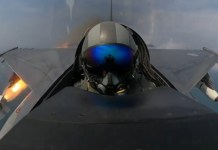Russia’s ‘quiet diplomacy’ played a vital role in reducing India-China border tensions. Moscow’s efforts have helped in the release of ten Indian army soldiers that were captured by the People’s Liberation Army (PLA) ahead of the Russia-India-China (RIC) foreign ministers’ meet on June 23.
India, China Agree To Withdraw Troops From LAC; The Question Is Who Will Pull-Out First?
As reported earlier by EurAsian Times, twenty Indian soldiers were killed in a violent face-off in the Galwan valley on June 15-16 after a clash broke out on the Line of Actual Control (LAC).
It has been reported that the Chinese PLA troops have moved back tents, vehicles and soldiers by 1-2 kilometres from locations where disengagement was agreed upon at Corps Commander-level talks.
“Russia played a low-key, but useful role in reducing India-China tensions after the June 15 episode. The capture of the army men had cast a shadow on the RIC meet, with India finding it difficult to attend the meet, under those circumstances,” said a source.
RIC is a strategic grouping that was first held in the late 1990s under the leadership of Yevgeny Primakov, a Russian politician as “a counterbalance to the Western alliance.” The group was founded based on ending its subservient foreign policy guided by the USA and renewing old ties with India and fostering the newly discovered friendship with China.
Together, the RIC countries occupy over 19% of the global landmass and contribute to over 33% of global GDP.
At RIC 2020, where the foreign ministers of the three nations got together via virtual conference Russian foreign minister Sergey Lavrov said that Russia doesn’t have an intention to interfere in the India-China border conflict.
“I don’t see any reason for a third-party intervention to solve the current issue,” Lavrov said supporting India’s stand against any outside intervention to address bilateral differences.
However, sources indicated that Moscow used its good offices in various capitals to convey a message to China to show gestures to reduce tensions. “All three sides had stakes in reducing tensions.
Based on Russia’s relations with India and China, Moscow tried to create a situation that does not derail the RIC meeting. But the idea was not to intervene in a bilateral dispute, rather it was to use quiet diplomacy,” a source said.
The RIC meet, considered a confidence-building measure (CBM), enabled to keep Indian and the Chinese engaged without which ties could have touched a further low, according to some sources.
Presidential Spokesman Dmitry Peskov had said earlier that the Kremlin is keeping a close watch on the issue. “Certainly, we are watching with great attention what is happening on the Chinese-Indian border. We believe that this is a very alarming report,” Peskov said.
Indian PMNarendra Modi’s surprise visit to Ladakh came hours after he spoke to Russian President Vladimir Putin on the phone to congratulate him for winning the constitutional amendment which would allow Putin to seek two more terms as president and, if re-elected, to stay in power until 2036.
Prime Minister Modi “conveyed his keenness to welcome President Putin in India” for the annual bilateral summit this year, said the Ministry of External Affairs (MEA). However, the MEA spokesman Anurag Srivastava did not give a direct answer when asked if the China-Indian border situation had been discussed.
The MEA said the two leaders “agreed to maintain the momentum of bilateral contacts and consultations”, and that Putin thanked the PM for the phone call and reiterated his commitment to further strengthen ties.




